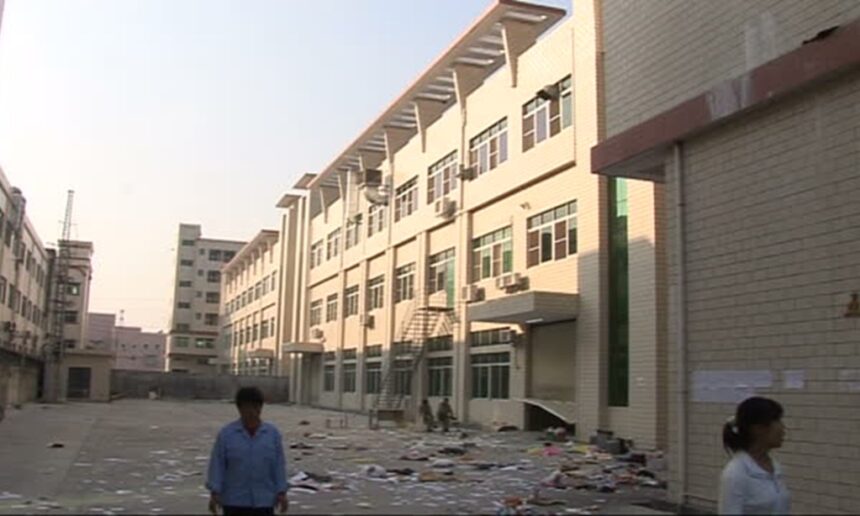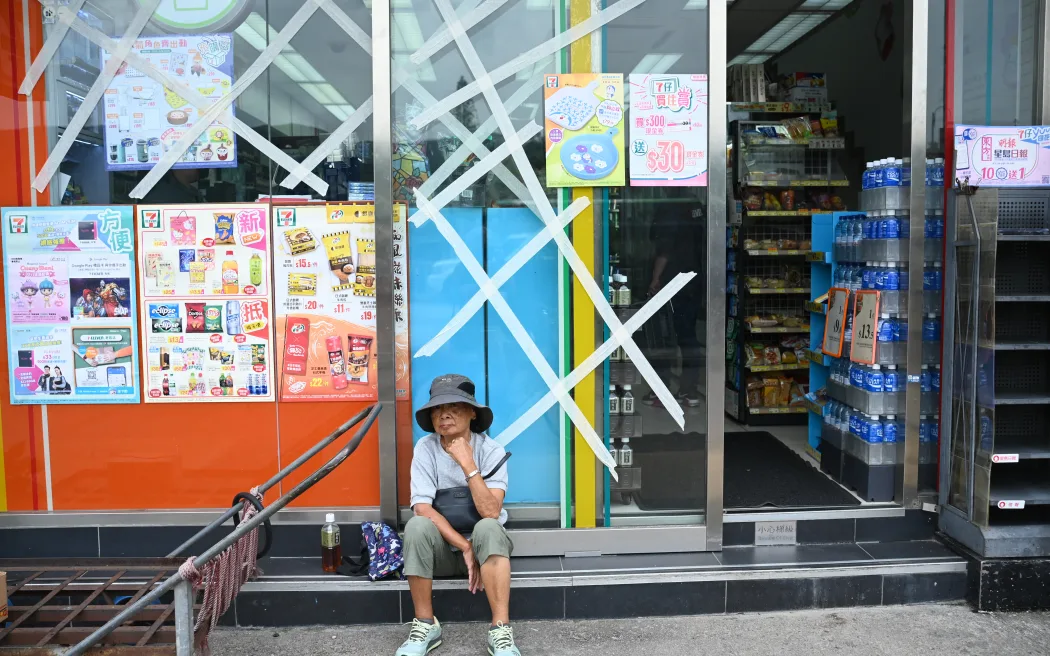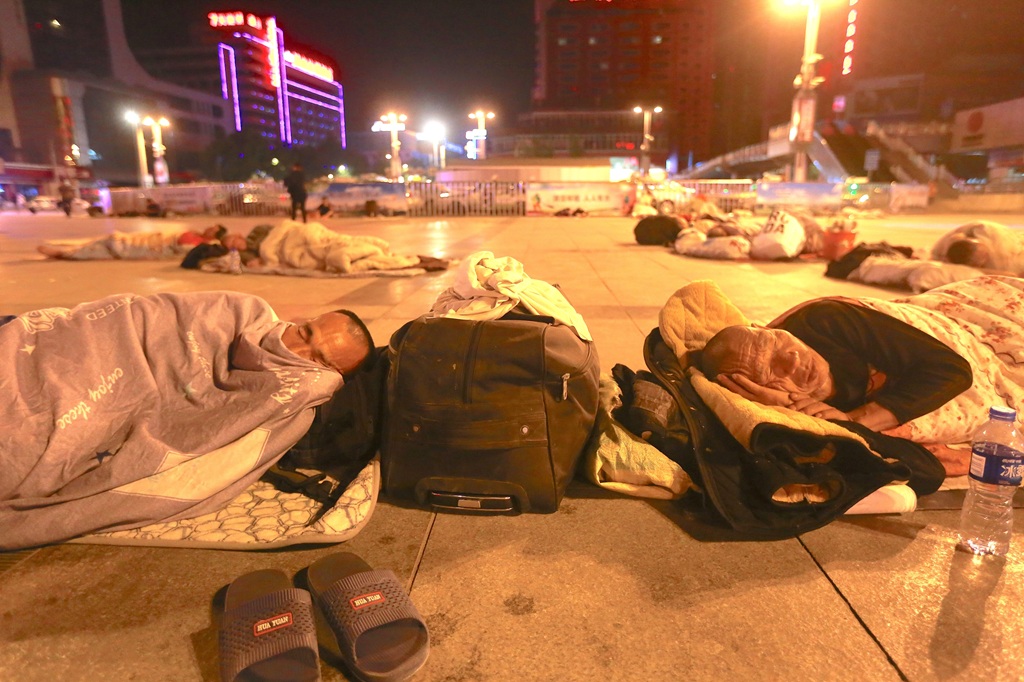BEIJING – Guangdong province was once the driving force behind China’s growth. Its main cities, like Shenzhen, Guangzhou, and Dongguan, fuelled global supply chains for decades. Today, the scene is changing.
Many production lines sit untouched while small shops, once busy, have locked their doors for good. Joblessness is rising, making life harder for local workers. Setbacks from American tariffs, a rising trade conflict, and deep changes in the economy are shaking Guangdong’s reputation as the “factory of the world.” At the same time, the threat of rising prices mixed with low growth (stagflation) is growing.
Many young adults, tired of endless work for lower pay, are turning to “lying flat”, a trend where they step away from the pressure to chase success.
Starting in the late 1970s, Guangdong became a focus for China’s new market reforms. Special zones in cities like Shenzhen brought in overseas finance, turning the area into a top spot for manufacturing.
By 2024, Guangdong’s economic output was worth 14 trillion yuan (1.91 trillion dollars), ranking it as a global economic force and putting its ports near the top worldwide.
Last year, Guangzhou and Shenzhen sent goods worth almost 821 billion dollars overseas, exporting electronics, clothes, and more to major American firms at low cost.
Yet, things have stalled. In 2024, Guangdong grew only 3.9 percent, missing its growth goal for the third year in a row and falling behind China’s national figure of 5 percent. Places like Guangzhou, Foshan, and Shantou grew even slower.
Dongguan, once praised as the “factory of the world”, has seen large sections turn quiet, with many plants and storage spaces unused.
The formerly lively streets of Ronggui now seem empty. Once a centre for making fridges and air conditioners, businesses here have closed or moved. “Business is slow—a lot of plants have packed up and gone,” says Li Jilei, a cook working in Houjie since the boom years.
“Our children go to school here though, so moving isn’t easy for us.” In the next street, Zhou Jingjing, who sells dumplings, misses the crowds. “There aren’t many evening customers. Factories are cutting back, and people have less to spend.”
Impact of Tariffs and Trade Conflict
The trade dispute with the United States, revived during Donald Trump’s second term, has struck Guangdong hard. By February 2025, tariffs on some Chinese goods had risen to 145 percent, causing American buyers to freeze large orders or look elsewhere.
A trade ceasefire in May eased tariffs to a minimum of 30 percent, but many factories were already hit. With few other markets, firms across the province found themselves stuck with finished goods and had no choice but to slow production.
In Panyu, Lily Liao runs Guangzhou Dawang Garment and says her usual orders worth 100,000 dollars from American clients vanished overnight. “It’s impossible to keep selling at a loss,” she says. Mr Wang, whose business is making ice cream machines, stopped shipping to the US for the first time in more than 20 years. “American rules change all the time. Customers are just waiting and watching,” he explains.
On top of this, the removal of the “de minimis” rule (which let small e-commerce packages enter the US without taxes) has hurt local workshops that supply global online stores such as Shein and Temu.
In places like Nancun, often called “Shein Village,” feedback suggests orders have dropped 20 to 50 percent. With this key loophole now closed, textile and electronics producers have lost an important source of earnings.
Housing Troubles and Pressure from Stagflation
Guangdong’s struggles go deeper than trade. The province has battled a five-year-long crisis in property, highlighted by the collapse of giants like Evergrande and Country Garden. Confidence in buying has fallen, dragging retail and other local spending below the national average. “The property downturn hurts families and businesses here,” says Alicia Garcia-Herrero, an economist at Natixis. “Guangdong isn’t the star performer it once was.”
With costs rising and spending flat, many now worry about stagflation or even deflation. In March 2025, prices at the shops fell by 0.1 percent, repeating a drop from the month before. Factory prices dropped even faster, down 2.5 percent—the biggest fall in four months.
Manufacturing bosses, left with too much stock, are cutting prices to stay afloat. This pressure trims profits even further. “Deflation might trap the region in slow growth for years,” a Fitch Ratings analyst tells us. Meanwhile, more robots and automated lines in areas like electric cars mean fewer jobs, leaving many people out of work even as companies look more high-tech.
The human cost is clear. Factory shutdowns are creating massive layoffs. Experts reckon tariff changes have cost 10 to 20 million jobs across China, many of them in Guangdong’s plastics, appliances, and garment sectors. Take Liang, a metalworker in Ronggui. Over two years, his monthly pay has dropped from 9,000 to 7,000 yuan. “I’ve got a house loan and kids to worry about. Looking for new work feels risky,” he admits.
Young people feel the cold the most. The official unemployment rate for those aged 16 to 24 hit 18.8 percent last August, but some believe the real figure is twice as high. Now, just 15 to 20 percent of recent graduates find steady work, half the share of a decade ago. With no jobs on offer, many return home and pick up the role of “professional children.”
Young people flood social media with stories of disappointment, while some back the “lying flat” attitude—choosing rest and a simple life over chasing dwindling rewards. “Why work so hard if there’s nothing to gain?” says a 23-year-old ex-factory hand from Dongguan now living with his parents.
Big Changes for Guangdong
Guangdong’s problems show what happens when an old way of doing business runs out of steam. Local businesses have moved from cheap assembly lines to more technology-centred work. Manufacturers pack up for lower-cost areas such as Vietnam and India.
Even top names like BYD are building factories abroad to avoid tariffs. Central government responses, worth hundreds of billions of yuan for electric vehicles, appliances, childcare, and cheaper loans, have not made much of a dent. Many experts doubt short-term cash fixes will be enough to solve deep problems in trade, property, and demand.
Some remain hopeful despite it all. At the Canton Fair, Tracy, who sells waffle makers, remains upbeat about finding new buyers in Europe and Africa despite losing her main American client. Pedro López, an Argentine sourcing agent, says more Chinese-made goods could turn up in Latin America soon. Still, time is not on the side of small firms and workers in Guangdong, who may not adapt fast enough.
Guangdong faces tough decisions. Its factories, once celebrated around the world, now face closures and silent production floors. The province is exposed as never before to the risks created by trade disputes, a crumbling housing sector, and price stagnation. For families like Li Jilei’s and Liang’s, the main worry is getting by—paying off homes, supporting children, and finding stable work. For younger people, taking a step back from ambition reflects a loss of faith in the promise of prosperity.
Beijing’s support might ease pain in the short run, but lasting recovery will need real changes. Without this, Guangdong could lose its position as the country’s economic leader, with closed plants, deserted shopfronts, and a new generation struggling to find its place.
Related News:
China’s Faces Rising Unemployment as Factories Close Due to U.S. Tariffs
















